Get ready to dive into the exciting world of Hand and Foot, a popular and engaging American card game that brings friends and family together for hours of fun. In this guide, we’ll walk you through everything you need to know to master the game, from understanding the basic rules to learning advanced strategies and tactics. So, grab a deck of cards, form your teams, and let’s get started!
Understanding the Hand and Foot Rules
Forming teams:
- In a game of Hand and Foot, players typically form teams of two, but the game can also be played individually or in threes.
- When playing individually, players will face off against each other. If playing in teams, partners must sit across from each other so that the two teams alternate turns when playing the game.
Dealing cards:
- Hand and Foot requires a large number of cards. The game typically uses five decks of cards, including jokers, for a total of 270 cards.
- Before the game begins, shuffle all the cards together thoroughly.
- After shuffling, each player picks up 22 cards, 11 to form their “hand” and 11 to be set aside as their “foot.”
- The remaining cards are placed facedown in the center of the table, forming the “draw pile.”
Beginning the game:
- Before starting, players should sort their hand and foot piles by grouping the same card values together, making it easier to strategize and build melds during the game.
- The game begins with the player to the left of the dealer. On their turn, players draw two cards from the draw pile and then aim to play cards from their hand to create melds.
Creating melds:
- A meld is a set of cards, typically consisting of three or more cards with the same numerical value.
- There are two types of melds: clean melds and dirty melds. Clean melds only contain natural cards (no wildcards), while dirty melds have one or more wildcards (jokers or twos).
- Players may lay down a meld in front of them on the table or add cards to existing melds on the table to create a new meld. You can only add cards to your own or your team’s existing melds.
Playing the foot:
- Once a player has used all of the cards in their hand, they move on to their “foot” pile.
- The objective is to play all of the cards in the foot and go “out” by discarding the last card in their hand. Players must ask for permission from their teammates before playing their last card.
Scoring and winning:
- After the last card has been played, the round ends, and the score is tallied.
- Each card has a point value: three to seven are worth 5 points, eight to king are worth 10 points, aces are worth 15 points, twos and jokers are worth 20 points, and red threes are worth 100 points.
- At the end of the round, the team’s scores are combined. The team with the highest cumulative score after a pre-determined number of rounds is declared the winner.
Summary:
The Hand and Foot card game is a delightful game that combines strategy and teamwork. By understanding the basic rules, including how to deal cards, form teams, and achieve the objective of the game, you’ll be well on your way to becoming a Hand and Foot card game enthusiast! So gather your friends and family, grab a few decks of cards, and let the fun begin!
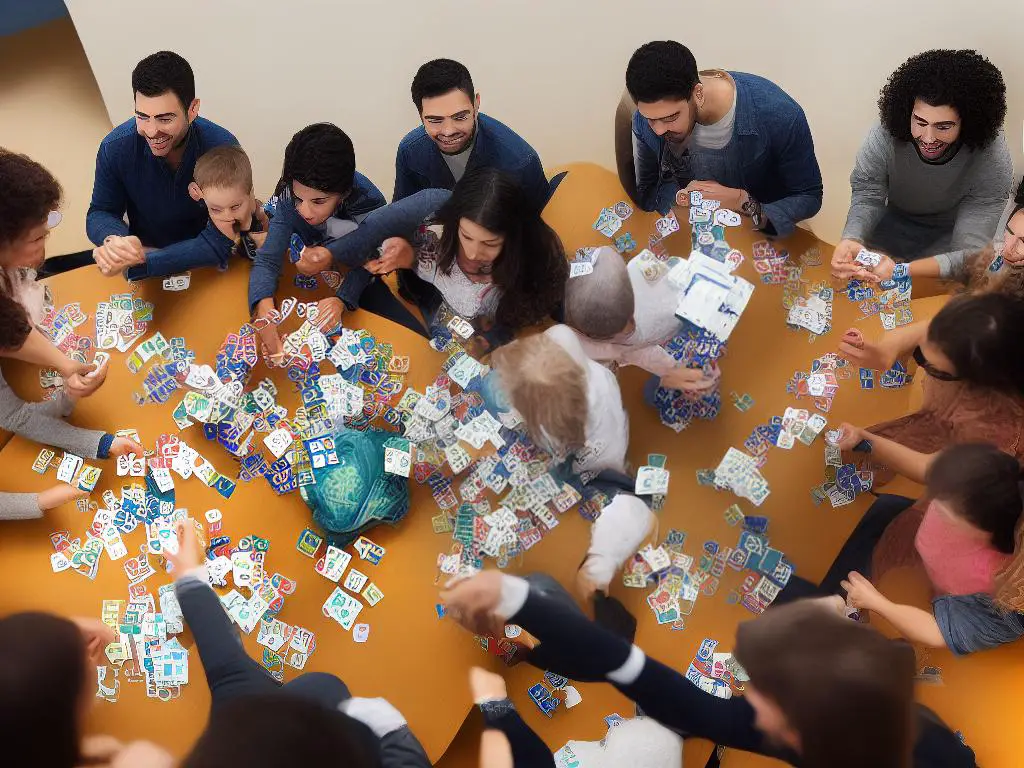
Card Rankings and Values
The Hand and Foot card game is a fun and engaging card game that can be played with multiple players. To play the game effectively, it is essential to familiarize yourself with the rankings and point values of each card. Here is a detailed guide on the card ranking and values in the Hand and Foot card game:
1. Card Rankings:
In this game, cards are ranked in the following order, from highest to lowest: Ace, King, Queen, Jack, 10, 9, 8, 7, 6, 5, 4, 3, and 2. Aces are considered high cards, while 2’s are considered the lowest. Jokers and Deuces (2’s) act as wild cards in this game and can be used to represent any card rank.
2. Card Point Values:
Each card carries a specific point value in the game. The point values are as follows:
- Aces: Aces have a point value of 20 points each.
- Face Cards (Kings, Queens, and Jacks): Each face card carries a point value of 10 points.
- Number cards (10, 9, 8, 7, 6, 5, 4, 3): The point value of each number card corresponds to its numerical value. For example, a 10 card is worth 10 points, a 9 card is worth 9 points, and so on.
- Wild Cards (Jokers and Deuces):
- Jokers: The Joker is considered a wild card in the game and carries a point value of 50 points each.
- Deuces: Deuces, or 2’s, are also considered wild cards, and they carry a point value of 20 points each.
- Red Threes and Black Threes:
- Red Threes: In Hand and Foot, red threes (the three of hearts and the three of diamonds) carry a special point value of 100 points each. However, they cannot be used in melds (sets of cards) and must be replaced when they’re in a player’s hand.
- Black Threes: Black threes (the three of spades and the three of clubs) have a point value of 5 points each, just like other number cards. However, they play a unique role in that they can be used to block other players from accessing certain piles of cards.
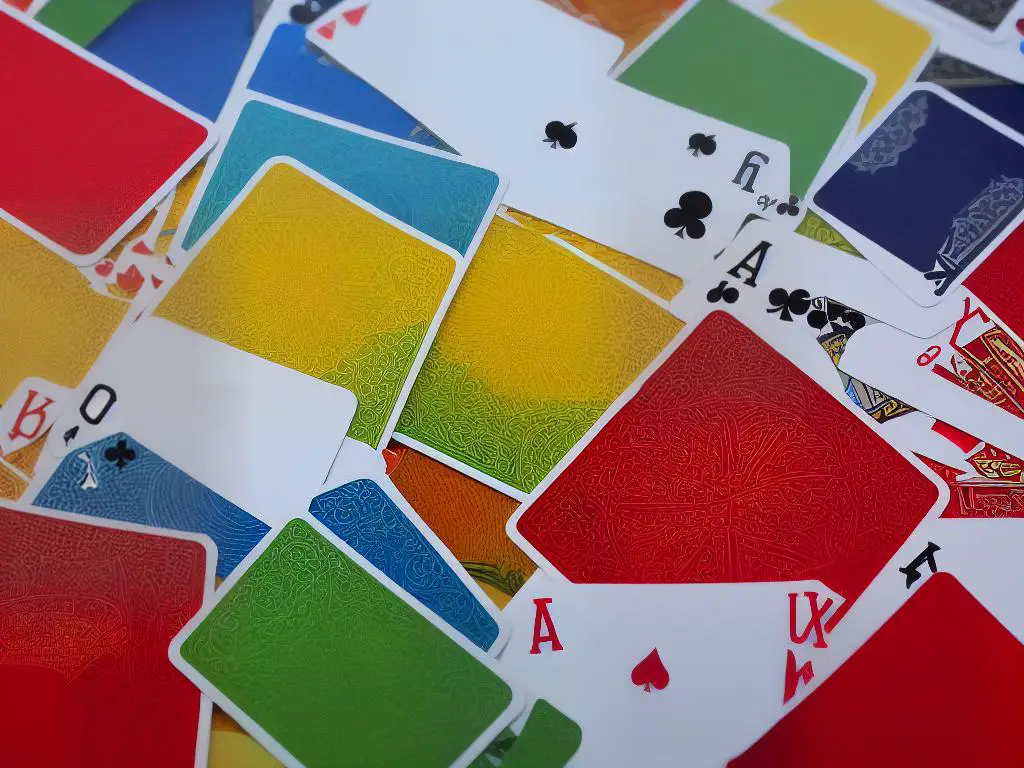
Melding and Forming Books
Melding Cards:
Melding is the process of combining three or more cards of the same rank to build a set. In Hand and Foot, there are specific rules that determine how and when you are allowed to meld cards.
- To begin melding, a player must have at least two natural cards (cards without wildcards) and a wildcard in their hand. Wildcards are Jokers and Twos in Hand and Foot.
- The first meld a player creates must meet a minimum point value for their team to be ‘on the board.’ The minimum point value is determined by the cumulative score from previous rounds:
- For round 1 – 50 points
- For round 2 – 90 points
- For round 3 – 120 points
- For round 4 – 150 points
- Players can add to existing melds on their side of the table but cannot add to opposing teams’ melds during their turn.
- Players can use wildcards (Jokers or Twos) to complete a meld. However, there must be more natural cards than wildcards in a meld.
Forming Books:
Once a meld has been created, players work collectively to form books. There are two types of books in Hand and Foot – clean books and dirty books.
- Clean Books: A clean book is made up of seven or more natural cards without any wildcards. When a player creates a clean book, they close it by placing the stack of cards with a red card on top to indicate its completion. A clean book is worth 500 points for the team.
- Dirty Books: A dirty book is made up of seven or more cards that include one or more wildcards. When a player completes a dirty book, they close it by placing the stack of cards with a black card on top. A dirty book is worth 300 points for the team.
- In addition to forming books, accumulated meld points also count towards your team’s total score at the end of each round.
Conclusion:
Now that you understand the process of melding cards and forming books in Hand and Foot, you are ready to play! Remember, teamwork is crucial, as players must work together to meet minimum point values, create melds, and complete books to outscore the opposing team. Have fun and enjoy this entertaining card game with friends and family!
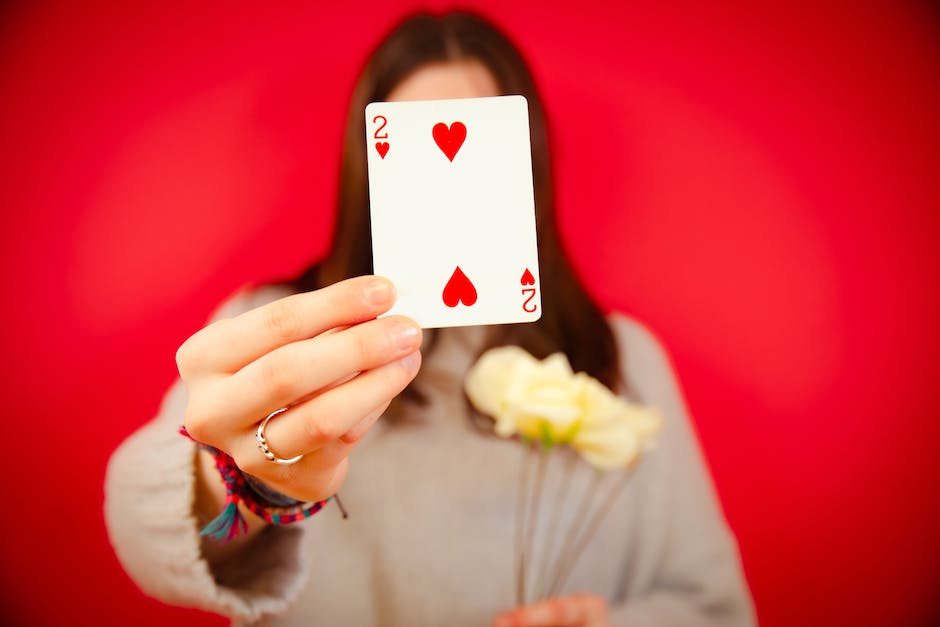
Drawing and Discarding Cards
1. Know the game objective: The main objective of the Hand and Foot card game is to get rid of all the cards in your hand (the initial 11-card hand) and foot (the second 11-card hand) by making various sets (melds) of cards.2. Know when it’s your turn: Play moves clockwise in the Hand and Foot card game. Be aware of your position at the table and be prepared to take your turn as it comes around.3. Draw two cards: When it’s your turn, start by drawing two cards. You may either draw two cards from the draw pile (the main deck) or pick up the top seven cards from the discard pile, provided that you can use the top card in a new meld or add it to an existing meld on your table.4. Make melds: Before discarding, you can lay down any melds that you have created. Melds are groups of three or more cards of the same rank (number or face card). A meld must have at least three natural cards (not wild cards). Wild cards (2s and Jokers) can be added to a meld, but there cannot be more wild cards than natural cards in a meld.5. Discard a card: After you have drawn your two cards and played any melds, you need to discard a card from your hand. Choose a card that you don’t need or that doesn’t fit with any of your current melds. Place this card face-up on the discard pile. By discarding, you will maintain the same number of cards in your hand as before your turn.6. Maintain a balanced hand: When deciding which card to discard, aim for a balanced hand, which includes a mix of numbers and wild cards. Discarding cards that don’t fit into any current melds or potential future melds will optimize your hand.7. Optimize the discard pile: When discarding, also try to avoid discarding cards that would be useful for the other players, especially your opponents. Discarding low-ranking cards or cards that you know other players have already discarded can help disrupt their gameplay.8. Transition to the foot: Once you have no cards left in your hand, you may pick up your foot and continue playing with that hand. Your turn will continue as described earlier, drawing two cards and discarding one.

Going Out and Ending Rounds
Hand and Foot is a popular card game that is fun and easy to learn. One of the critical parts of the game is knowing when and how to go out and end a round. This guide will provide step-by-step instructions to help you understand the criteria for going out, how to end the round, and how to prepare for the next round.Criteria for going out: In order to go out or end your turn, you must meet specific requirements known as “going out criteria.” These criteria are as follows: a. You and your partner must have laid down at least two clean books (sets of 7 cards of the same rank without wildcards) and one dirty book (a set of 7 cards with wildcards). Some variations require more books, so be sure to confirm the rules with your fellow players. b. You must have used all the cards in your hand. The last card played should be a discard, meaning that no card remains in your hand. c. Your partner must have had a turn in which they picked up their “Foot” before you can go out.How to end a round: Once you’ve met the criteria for going out, here’s how you end the round: a. Play any remaining sets or runs necessary to fulfill the requirements for going out. If you have additional cards that can be legally added to existing sets or runs, do so. b. Announce to other players that you intend to go out. This allows your opponents to ask questions or clarify the status of any sets or runs. c. Discard your last card onto the discard pile. This discard marks the end of your round. d. Once you’ve gone out, the other players have one more turn to play any remaining cards and make as many sets or runs as possible.Preparing for the next round: After the round has ended, follow these steps to prepare for the next round: a. Calculate the scores for each team. Points are based on the cards in each player’s books, as well as any remaining cards in their hand or foot. The scoring system varies depending on the version of Hand and Foot that you are playing, so be sure to confirm the scoring rules with your fellow players. b. Collect and shuffle all the cards, including the ones used in the books and the remaining cards in each player’s hand or foot. c. Deal a new hand and foot to each player, following the same procedure as the beginning of the last round. d. Decide if you want to increase the going out criteria for the next round. Some players like to make the game more challenging by requiring additional clean or dirty books for each subsequent round.Now that you’ve learned the criteria for going out, how to end a round, and how to prepare for the next round, you’re ready to play Hand and Foot with confidence! Remember, the most important thing is to have fun and enjoy your time with friends and family. Good luck!

Scoring and Winning the Game
Objective: Master the process of calculating scores for each team and understand the winning conditions in the Hand and Foot card game.Materials:Step One: Understand point values for each cardStep Two: Calculate scores for meldsStep Three: Calculate bonus pointsStep Four: Deduct point penaltiesStep Five: Tally scores and determine the winner

Strategies and Tips
Familiarize yourself with the rules:
Before diving into any strategy or tips, ensure that you are well-versed with the rules of the Hand and Foot Card Game. This will ensure that you are able to apply the strategies effectively and understand the gameplay better.
Focus on building books:
In Hand and Foot, the primary source of points is through completing books. Make sure to always keep an eye out for potential books and prioritize creating books over other moves. Aim to build at least one red book and one black book, but ideally, try to complete multiple books of each type.
Identify your wild cards wisely:
Wild cards are valuable assets in the game, as they can be used to complete books faster. It’s important to use your wild cards strategically and save them for situations where you might be stuck or need a little extra help in completing a book.
Keep an eye on your opponents:
One of the best strategies in any card game is to keep an eye on your opponents’ moves. Pay attention to the cards they play and pick up, as this information can help you determine what books they’re building and how close they are to completing them.
Plan your discards:
While it’s tempting to just toss any card you don’t need into the discard pile, doing so without thinking can inadvertently help your opponents. Make a conscious effort to discard cards that you think are less likely to help your opponents complete their books. When possible, try to discard low-value cards, as they will not be as helpful if they are picked up by an opponent.
Know when to go out:
Going out, or playing all the cards from your hand and foot, can be a key moment in the game. However, timing is crucial. Try to go out when you have earned a significant number of points, and when doing so will not leave your partner exposed to losing points.
Communication with your partner:
If you’re playing Hand and Foot with a partner, communication is key. Discuss strategies and make sure you’re on the same page about what you’re trying to accomplish. However, be careful not to disclose too much information to your opponents.
Practice makes perfect:
The more you play Hand and Foot, the better you’ll become. Regular practice will help you develop your own playing style and strategies, making you a formidable opponent.
Adaptability:
While it’s important to have a plan, Hand and Foot can be unpredictable. Be adaptable and ready to shift your priorities based on the cards in your hand and foot, as well as how the game develops.
Remember to have fun:
Lastly, always remember that Hand and Foot is a game meant for enjoyment. While winning is great, make sure to have fun and enjoy the company of your fellow players.
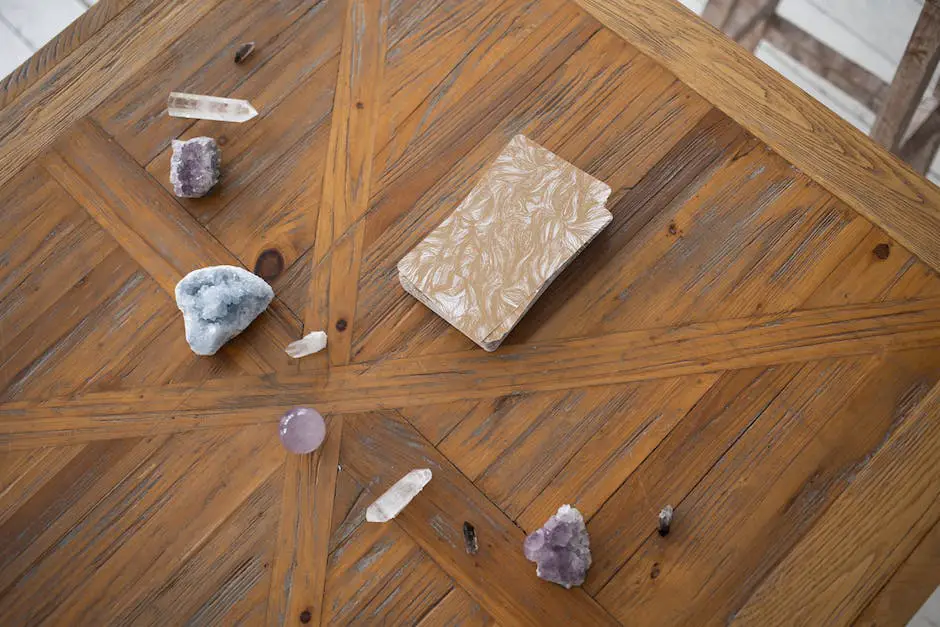
Sample Game Walkthrough
Before starting the game, make sure you have the following:
- Four to six players (the game is best played with four players in teams of two).
- Five standard card decks with two jokers per deck (for a total of 10 jokers).
- Pen and paper to keep score.
Step 1: Preparing the Cards
Shuffle all the decks of cards together and allow each player to cut the deck. Then, each player is dealt two stacks of 11 cards, one stack will be referred to as the “hand” and the other as the “foot.”
Step 2: The Hand and the Foot
The dealer tells the players when to begin. Players start by picking up their hand and arranging the cards in numerical order. Do not pick up your foot until you’ve used all the cards in your hand.
Step 3: Beginning the Round
Draw two cards from the draw pile. If you can form a meld (a set of three or more cards of the same rank), lay it face up in front of you. The primary goal is to get as many melds as possible and to “go out” by discarding your last card, which ends the round. Players cannot play a card in their foot until they have used all their hand cards.
Step 4: Melds and Points
Melds consist of three or more cards of the same rank (e.g., three 4’s or four queens).
The types of melds are as follows:
- Red melds: Aces and face cards (i.e., Kings, Queens, and Jacks).
- Black melds: Cards from 2 to 10.
- Wild melds: A combination of two to five wild cards (jokers and twos).
Red melds are worth 100 points each; black melds are worth 50 points each, and wild melds are worth 200 points. Each card in a meld is also assigned a point value. Aces are worth 100 points; Twos and Jokers are worth 50 points; face cards are worth 20 points, and cards from 3 to 10 are worth 5 points.
Step 5: Discard Pile
Aside from drawing cards from the draw pile, players can also take the top seven cards from the discard pile if they can immediately use the top card in a new or existing meld. However, they must take the whole pile, which may contain undesirable cards.
Step 6: Clean and Dirty Melds
Dirty melds are melds containing wild cards (i.e., Jokers and Twos). Clean melds are melds without wild cards.
Step 7: Ending the Round
A player “goes out” when they play their last card. Only then can the players pick up their feet and start using those cards. To go out, a team should have at least one clean meld and one dirty meld. After playing their last card, they should discard a card to signify the end of the round.
Step 8: Scoring
Once a round has ended, teams tally their scores. The total points earned from melds, minus the total points in unplayed cards in team members’ hands and feet, result in their score for the round. A new round then begins, with the deal passing clockwise. Multiple rounds are played until a team reaches a predetermined point total (typically 10,000 points) to win the game.
Remember that practice makes perfect, so play several games of Hand and Foot with your friends or family to gain a deeper understanding of the gameplay and develop strategies. Good luck and have fun!

Common Variations and House Rules
Hand and Foot is a popular card game with numerous variations. When playing with different groups, you may encounter various house rules or alterations to the standard game. This guide will help you understand some of those common variations.1. Number of Decks and Cards: The standard game uses one deck with two jokers for every two players (e.g., four players would use four decks, each with two jokers). Some groups might use more or fewer decks or choose to play without jokers. 2. Number of Books: The standard game requires players to create specific numbers of clean (no wild cards) and dirty (containing wild cards) books. Some groups might play with different book requirements, such as needing an extra clean or dirty book, or requiring additional books in a specific color.3. Wild Cards: In most versions, jokers and deuces are treated as wild cards. Some groups might choose to use another card as a wild card (e.g., threes or a specific suit of cards) or limit the use of wild cards in a book. 4. Points Needed to Lay Down: When laying down sets of books, the standard game requires achieving particular point values set by the number of completed rounds. Some groups might have varying point values, or even let players lay down with no specific point requirement.5. Table Talk: In some games, players are allowed to give hints or advice to their partners. Other groups might have a strict “no table talk” rule, requiring players to communicate only through non-verbal cues or not at all.6. Red Threes: Some groups treat red threes as bonus cards, rewarding players for collecting them. Others treat them as penalty cards, deducting points for each one collected. Additionally, there are groups that don’t assign any special value to red threes.7. End of a Round: When a player goes out by discarding their last card, some groups require that player’s partner to have at least one turn before the round ends. Others end the round as soon as a player goes out.8. The Foot: Instead of picking up the foot immediately after going through their hand, some groups have a rule where players can only pick up the foot after their partner has had a turn.9. Points for Going Out: In most games, players get a bonus for going out. However, some groups may vary the bonus amount or remove the bonus completely.When playing Hand and Foot with a new group, it’s essential to discuss and agree upon any variations or house rules. By doing so, you will ensure that everyone is on the same page and prevent misunderstandings during gameplay. Enjoy playing this fun and engaging card game!

Practice Games
Gather Materials: To play Hand and Foot, you will need the following:
- 4 to 6 players (it’s best played with partners)
- 2 standard decks of playing cards per player, including Jokers (you will have 4 decks for 4 players, 5 decks for 5 players, and 6 decks for 6 players)
- Pen and paper to keep score
Choose Partners and Seats: If playing with an even number of players, partner up. Partners should sit across from one another, with opponents sitting in between.Deal Cards: Each player begins by dealing 2 sets of 13 cards for themselves. These two sets of cards will represent the player’s “hand” and “foot” respectively. The remaining cards are placed in the center of the table as the draw pile.Pick up your Hand: Each player should pick up their 13-card hand, but keep the 13-card foot faced down without looking at it.Begin Play: The player to the left of the dealer begins play by drawing two cards from the draw pile. If they can form a meld (a set of 3 or more of the same numbered cards), they may lay down their meld on the table in front of them. A meld can be added to throughout the game and may include wild cards (Jokers and 2s).Discard: After the player has drawn and either melded or passed, they must discard one card face up onto a discard pile.Continue Play: Play continues clockwise around the table with each player drawing two cards, potentially melding and discarding one card. If a player has no meld yet and wants to start by picking up the top 7 cards from the discard pile, they must have two of the same cards in their hand that match the top card of the discard pile.Complete your Hand: The goal of the game is to get rid of all the cards in your hand. Once a player has done this, they may pick up their foot and continue playing.Going Out: To end the round, a team must have at least one “clean” meld (no wild cards) with 7 or more cards, and one “dirty” meld (with wild cards) with 7 or more cards as well. The player must have their partner’s permission to go out, and they must be holding their foot when they do so.Scoring: Once a player goes out, the round ends, and each team adds up their points. Number cards score based on their value, with 5 to 9 points for black cards, 10 to 14 points for red cards, and 20 points for wild cards. Deduct 10 points for each card remaining in a player’s hand or foot.Additional Rounds: Play a total of 4 rounds. At the end of the fourth round, the team with the highest total score wins.Practice your skills by playing practice games with different combinations of players and partnerships. Apply the strategies and melding techniques you learn from each round to improve your gameplay for future matches.
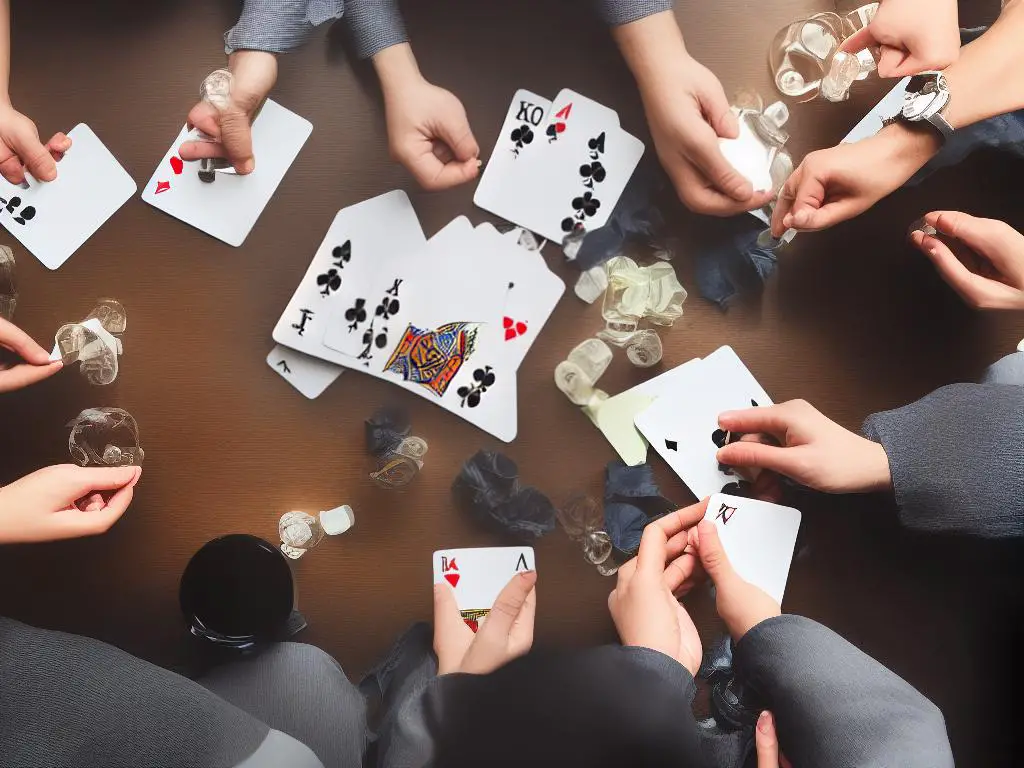
Now that you’ve gained a comprehensive understanding of Hand and Foot rules, card values, melding, scoring, and other essential aspects, you’re well on your way to becoming a skilled player. Remember that practice makes perfect, so be sure to spend time playing games with friends or family to hone your skills and put the strategies and tips you’ve learned to the test. Have fun and enjoy the camaraderie of Hand and Foot, one of America’s favorite pastimes!
